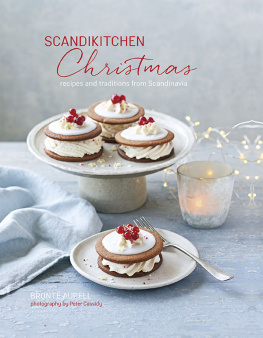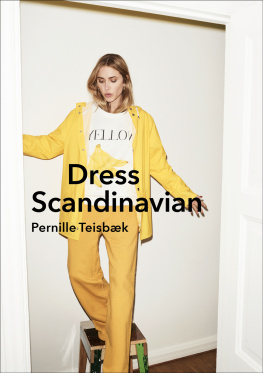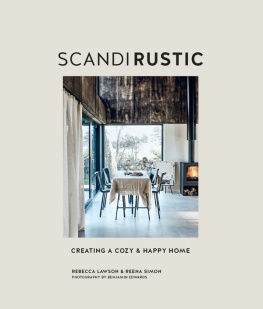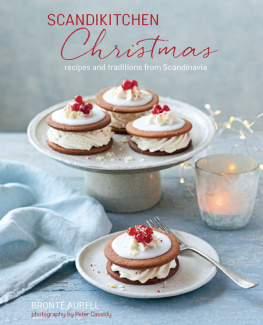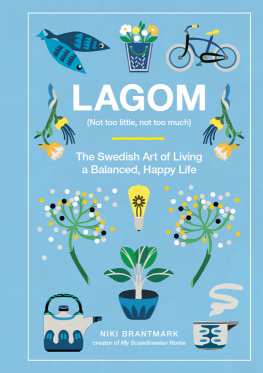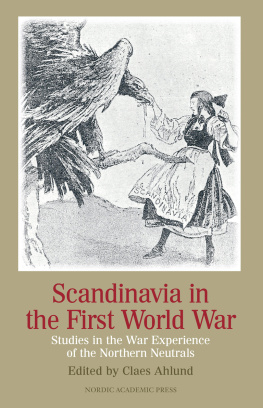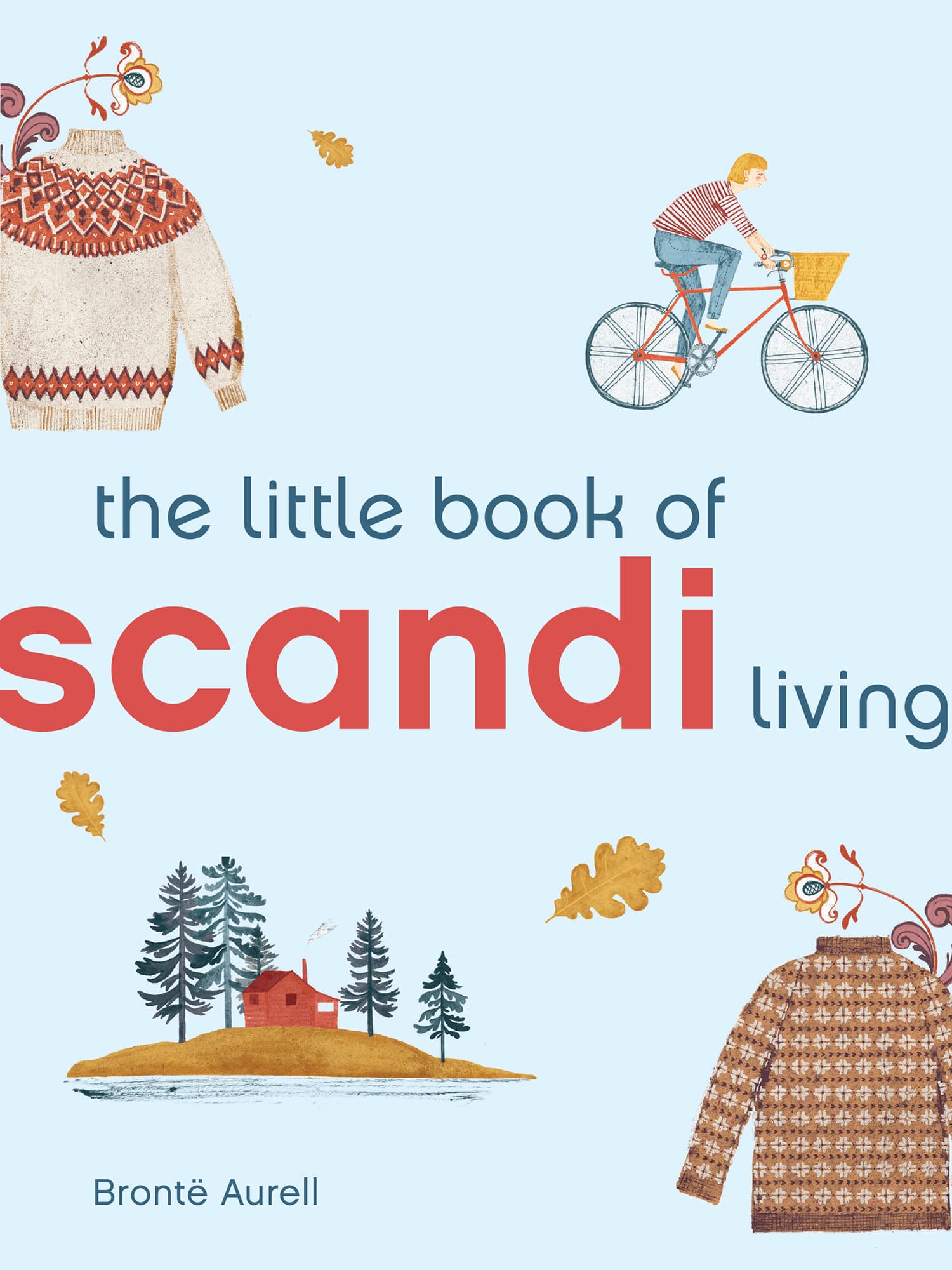Contents
Guide
THE LITTLE BOOK OF SCANDI LIVING
Bront Aurell

What is Scandinavia?
Scandinavia is a geographical definition, based on the Scandinavian peninsula, and includes Sweden, Norway and Denmark even though its not really on the peninsula but not Finland, even though it borders Sweden and Norway. Confused yet?
Most Scandinavians would include Finland when talking about Scandinavia, although Finns dont always include themselves in Scandinavia. This sometimes causes awkward situations where nobody wants to ask so we stare at the ground and wonder what else to talk about. Then we remember that as long as Finland loves ice hockey, saunas and Eurovision as much as the rest of us, then were all friends. But, officially, Finland is Nordic, not Scandinavian.
If you talk about Nordic countries (as a cultural union) and the Nordic Council (a geo-political inter-parliamentary forum for co-operation between the Nordic countries formed in 1952 to promote co-operation between the main Nordic countries), then it is made up of Sweden, Norway, Denmark, Finland, Iceland, the Faroe Islands and Greenland and the land Islands. Here, were all united.
Whether you call us Scandinavian or Nordic, were all friends and, in one way or another, were united. This book is about Scandinavia, though, and focuses on Sweden, Norway and Denmark.
Our geographical Scandinavia is made up of three very large places. Actually, two large places (Sweden and Norway) and a teeny one (Denmark). We are as different culturally as we are separated lengthways especially when you think there are only nineteen million people to fill the space. The landscape in the north of Norway bears as much resemblance to the landscape in the southern part of Denmark as Scotland does to Portugal; its an absolutely huge place.
At the end of it all, we are united by the similarities in our main languages, the history of our Viking heritage, Norse mythology, the times we have fought, traded countries, fought again and made up, and eventually ended up as one of the most forward-thinking, top-of-the-happiness-league-table places on the planet. The harsh environment that we live in also unites us in the snow, in the darkness, in the amazing light and in green nature. We are so very different and we are so very similar, that the delineation between nations becomes blurry. This book is an attempt to untangle some of the smaller things that separate us and to illustrate the big stuff that makes us so very proud to be Scandinavians.
Style

How Scandinavians see each other
From the outside looking in, other nations see the Scandinavian countries as one big place. They dont see Norway, Sweden and Denmark only fjords, snow, blonde people and meatballs with some ABBA thrown into the mix. To the outside world, Scandinavia is the brand by which we define ourselves once we leave our shores and travel out into the big world.
If you ask a Scandinavian person how they see themselves, you will guaranteed never get the reply Scandinavian. Nobody in Denmark, Sweden or Norway identifies with a collective nationality. Just because it is a geographical definition doesnt mean it is a national one. People in England may well identify both as British and English, but a Dane will always be a Dane unless the talk is of geography in which case he can be Scandinavian. Or Nordic, if the talk is about the Nordic union. It will never be any Scandinavians first choice to identify as Scandinavian and we have a tough time trying to understand why the outside world doesnt understand this.

For centuries we have lived side by side and we have been through a lot together. There have been wars, lots of wars. Times of peace and calm and times when we traded parts of our countries to each other willy-nilly. We have, over time, grown to have a loving relationship and deep understanding with our neighbours. This relationship is based on trust, respect and mutual cultural understanding despite our massive landmass, our cultures have many similarities (both cultural and linguistically) and, to an outsider, perhaps this is why we are often seen as one big nation. On the other hand, despite being so close, we are also far apart and we view each other very differently to how we are viewed by outsiders.

How others see Scandinavia
Here, the stereotypes often rule: blonde men and women, equality, nature, snow, lakes and fjords, bicycles, brave Vikings. The social welfare states, filled to the brim with cinnamon buns and pretty people. Maybe some nakedness thrown in for good measure. Definitely some ABBA, Swedish House Mafia and likely a bit of Nordic Noir and knitted-jumper fashion.
How we see ourselves (sort of, sometimes)
Danes are seen by themselves as laid-back no state-run alcohol shops, freedom to drink at seven in the morning. Norway views them as the comfortable people the Danes have time to do everything, no stress, whereas the Swedes see Denmark as lacking in self-control when it comes to drinking and such things. Sweden is also well aware that Denmark has Little Brother syndrome about being the smallest of the three countries, so makes sure to hand out an appropriate amount of loving teasing so that Denmark stays just a teeny bit miffed.
Both Sweden and Norway have issues understanding Danes because they sound as though they have hot potatoes in their mouths when they speak.
Norway regards Denmark as super-cool; the continental ones of the lot. Tall, stylish and always dressed in black. On the flipside, Norway laughs at the fact that Denmarks highest mountain is 147 metres (482 feet) high. Norway also likes Denmark because it is easy to get along with. Because Norway has little idea what Denmark is saying (both because of the hot potato and likely because he is drunk), Norway just smiles and nods and gets along with Denmark that way. Its all very hyggeligt.
Denmark sees itself as the forefather of the Vikings, the old ruler of Scandinavia at the time and the true owner of Skne (the bottom part of Sweden). Denmarks opinion matters and Sweden and Norway can say whatever they want: Denmark knows it is right and is prepared to shout about it. Denmark also realises it didnt actually invent much stuff (the Great Dane is not Danish, nor is the Danish pastry), so sometimes its not so nice to be Denmark standing in the shadow of the others with all their mountains, majestic fjords and cool inventions (such as the cheese slicer, Tetra Pak and dynamite).



